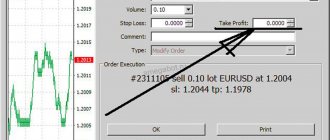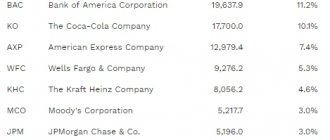The investment multiplier is a coefficient that shows the relationship between changes in investments and the amount of income received. This indicator significantly increases the level of demand, as a result of investments to increase income.
The investment multiplier is closely associated with the name of the American economist John Keynes. It was this scientist who introduced this coefficient into investment theory. It is because of this that this indicator is also known as the Keynes multiplier.
What does the cartoon show?
According to Keynes' theory, the investment multiplier is an indicator that shows the level of positive impact of investments in various industries. The indicator increases demand under the influence of investment, which has a beneficial effect on government revenues.
Today, this indicator is understood as a coefficient demonstrating how changes in investment volumes will affect the level of national production.
Let's consider the reason for the phenomenon:
- Initially, investments lead to increased profits for companies producing investment products (machines, production lines, building materials, etc.).
- These companies, as they operate, also increase consumption, create new jobs, increase production rates, increase demand for materials, etc.
- These factors influence the industries where consumer products come from, causing them to expand.
A similar chain reaction is beginning to spread to other industries. At the same time, as the rate of spread increases, the “perturbation effect” begins to fade, because part of the income received at each stage of this reaction becomes someone’s profit, and does not go back to consumption.
In addition, part of the profit goes into savings, thus being excluded from the subsequent formation of new income.
Conclusion: the multiplier effect of investment depends entirely on where the marginal propensity to consume and save is.
Important! The indicator under consideration is a coefficient demonstrating how the gross product will change from a change in the volume of investments.
The next point in Keynes' theory is the multiplier, which connects the dynamics of investment and national income.
The essence of the approach is that the initially invested amount of money turns into primary income, then part of it, when spent, is transformed into secondary, tertiary, etc. At the same time, employment and production must increase, provided that there is unemployed labor and spare productive capacity. The duration and overall effect of the multiplier process depend on the proportion in which income is divided between consumption and savings. The trend here is that the more income is consumed, the more income the initially invested amount of money will generate and the longer the multiplication process. In other words, the higher the propensity to consume, the larger the multiplier. The final point of Keynesian cycle theory is the concept of the accelerator. The latter reflects the impact of the increase in national income caused by an increase in initial investment on the new increase in investment. Thus, thanks to Keynes’s introduction of the principles of animation and acceleration, the investment-income-investment process became closed. [p.81] These theoretical premises have been tested in practice. The United States applied the Keynesian theory during the Great Depression, “injecting” mainly from foreign sources into its industry $600-700 billion annually. There are also known weaknesses in Keynes's studies. First of all, the value of the multiplier, which varies widely and, in fact, is set arbitrarily, raises objections. There is a similar doubt regarding the duration of the time lag, i.e. the period of time from investing resources to obtaining results. It is quite difficult to calculate it with sufficient accuracy for practical use. Therefore, the idea of a multiplier can only be used when constructing hypothetical scenarios, but not for accurate calculations. [p.65]
Finally, there is a model that reflects the dependence of the amount of income on the volume of investment Y = F(i). J. Keynes attached great importance to investment as an independent variable that affects the dependent variables employment, national income, and consumer demand of the population. In this regard, he developed the multiplier theory, which determines the effectiveness of government spending in terms of its impact on social production, employment, income and the market, and thereby on effective demand. [p.467]
J. Keynes gave economic theory a new quality. This is especially noticeable against the background of classical political economy, which focused on a purely theoretical analysis of the spontaneous regulatory role of the price system, leaving the quantitative side of this process without attention. Keynesianism turned the first page in the econometric analysis of the national economy. For example, a model was developed that expresses the dependence of the amount of income on the volume of investment Y = F(i). J. Keynes attached great importance to investment as an independent variable that affects the variables dependent on it - employment, national income, consumer demand of the population. In this regard, he created the multiplier theory, which determines how effectively government spending affects social output, employment, income and the market, and thereby effective demand. [p.316]
So far, we have looked at the multiplier effect associated with increased consumer spending. However, initial investment also affects employment. Here it can be noted that in general the multiplier principle was first described by the English economist R. Kahn in 1931, even before the publication of J. Keynes’s work, The General Theory of Employment, Interest and Money (1936). R. Kahn examined how initial investment, by increasing income and creating employment in any sector of the economy, contributes to secondary employment in industries or areas of production that create consumer goods. In our example, primary employment created the income of workers who purchased televisions. An increase in demand for this product will encourage TV manufacturers to expand production, purchase equipment, and hire workers. Thus, initial investments in the long term give impetus to expanded reproduction, generating new investments, new jobs and generally increasing national income. To digitally illustrate the multiplier, we will give a simple example. Let’s say that the state invested $1 million to organize public works (building a dam). If the MPC prevailing in society is 0.7, then the multiplier, i.e. [p.246]
Oxford University Professor J. Hicks, in his work Towards the Theory of the Business Cycle, very successfully supplemented Keynes's theory, which reveals the connection between consumption and investment through the multiplier, with an analysis of the cyclical movement of the economy from the point of view of the physical theory of wave impulses and the principle of acceleration. [p.253]
Comparison of the Keynes multiplier and Fisher's quantity theory of money [p.156]
Considering that the most important financial value in the modern economy is money, let’s consider how a change in its quantity affects the real values of the economic system (national income, investment, etc.). In previous chapters, we have already become acquainted with two opposing theories: Keynes's multiplier and Fisher's quantity theory of money. Now let's find out their comparative results. [p.156]
The peculiarity of the multiplier effect is that it is a mechanism with two blades; it can both enhance the growth of national income and reduce it. As a destabilizing factor, the larger the MPS value, the stronger the multiplier, and vice versa. To understand this relationship, consider an unusual phenomenon called the paradox of frugality. Its essence, as J. Keynes showed, is that people’s desire to save will outstrip the desire of entrepreneurs to invest, resulting in a reduction in the growth of national income. [p.298]
Keynesian macroeconomic theory is based on the idea of government regulation of aggregate demand. By stimulating public and private investment, expanding the system of government orders, and increasing spending on social needs, it was intended to influence the dynamics of real production. Keynes showed that it is investment, not saving, that promotes the growth of production, which causes a subsequent increase in income and new savings. This is called the multiplier effect. Unlike his predecessors, Keynes considered the policy of increasing nominal wages to be one of the means of expanding effective demand and maintaining employment. The basis of the Keynesian model of economic development was the system of public finance, an increase in government spending, a progressive increase in taxation, and budget deficits. [p.275]
Consumption, savings, investment. Investments and income. Animator by J.M. Keynes [p.463]
J.M. Keynes associated the growth of national income and employment with an increase in the volume of investments in the macroeconomy. He developed the concept of the multiplier, in which he revealed the quantitative relationship between the amounts of investment, consumption and national income. The multiplier formula was obtained by him from the condition of macroeconomic equilibrium [p.468]
The most important component of the theory of effective demand by J.M. Keynes is his concept of the multiplier. Its quantitative certainty has already been analyzed by us. Now, in relation to the concept of the multiplier, it is necessary to note the following [p.27]
Keynes advocates an increase in private and public investment as a decisive means for increasing overall employment. He prefers investments that do not increase the mass of consumer goods. This primarily refers to military production. Keynes developed the so-called employment multiplier. He calculated that an increase in investment provides a 2-3 times greater increase in employment. In this theory, the only correct position is that there is a chain connection between industries and divisions of social production, that investment in one industry stimulates the expansion of production in other related industries. [p.390]
In the short term, an increase in investment means an increase in the demand for investment goods and aggregate demand. In the long term, investment growth contributes to the commissioning of new capacities, an increase in production potential and real GDP, i.e. growth of aggregate supply. The relationship between investment and GDP was noticed and explained by J.M. Keynes, who came up with the multiplier rule. Neo-Keynesians supplemented the rule with the accelerator principle. The multiplier effect is due to the fact that, firstly, there is a constant circulation of income and expenses in the economy. What some economic entities spend on purchasing equipment, housing, and clothing, others receive as income. Secondly, a change in income causes an adequate change in consumption and savings. So, the initial investment is 10 billion rubles. will lead to an increase in demand for labor and credit resources. The growth in demand will lead to an increase in income in the form of wages, interest and profits, and household consumption will increase. Increase in income by 10 billion rubles. with a marginal propensity to consume 3/4 will give an increase in consumption of 7.5 billion rubles, the remaining 2.5 billion rubles. will be saved. Consumption expenses of 7.5 billion rubles. will mean an increase in the income of other households and an increase in their consumption and savings in accordance with the marginal propensity to consume and the marginal propensity to save. This chain can be continued until the source of income growth dries up. Thus, the initial changes in investments of 10 billion rubles. will lead to a multiple avalanche-like flow of expenses and income, growth in production and employment in related industries, and growth in real GDP by an amount greater than the initial investment. If its increase is 40 billion rubles, then the investment multiplier will be equal to [p.65]
J. Keynes attaches great importance to the role of investment (capital investment) in the economy. It states that the volume of national income, and therefore aggregate demand, is in a certain quantitative dependence on the total volume of investment. J. Keynes expresses this quantitative relationship in the theory of the income multiplier. Indeed, the growth of investment is an important condition for increasing national income, but it affects its volume not directly, but indirectly, through an increase in the volume of functioning means of production and labor. So, the expansion of investment leads to an increase in
Keynes, using the multiplier formula, mathematically expressed the relationship between the amount of investment, growth in employment and income. [p.504]
Investment multiplier and consumption function (Kahn, Keynes [p.32]
In practice, the phenomenon, which later received the name multiplier, was widely used by one of the remarkable Russian reformers S.Yu. Witte, initiating the construction of the Trans-Siberian Railway. The construction of the railway will develop metallurgy - it is necessary to cook metal and roll rails, mechanical engineering - it is necessary to build steam locomotives, the mining industry - we need coal for steam locomotives. Not to mention that each named link itself gives a multiplying effect by placing orders along the chain. Entire studies can be written about the significance of demographic, political, social, military and other effects in the economy. And they are. Witte's idea brought to life had a huge multiplying effect. Unfortunately, the reformer did not describe or substantiate this effect in any article on poly-economics or economics, otherwise the idea of the multiplier would not have been attributed to Kahn and Keynes. It's a shame [p.434]
The basic theorems of economic dynamics, set out in the late 40s, served as the basis for more complex growth models (J. Robinson, N. Caddor, W. Rostow and others [48, pp. 79-97]). The theory of cycles is developed in E. Hansen’s monograph Economic Cycles and National Income (1951)[20]. Unfortunately, Russia was isolated from this layer of science, to which such outstanding scientists as V. Leontiev and P. Samuelson (Nobel Prize winners in economics) contributed - the relationship of economic variables and the construction of econometric models Spiethof F., R. Harrod - the role of dynamic factors R.F. Kahn, J.M. Keynes - investment multiplier and consumption function, and other scientists who studied various aspects of cyclical development. [p.79]
The first dependence is the growth of government spending increases aggregate demand (consumption and investment). As a result, output and employment of the working population increases. It is important to take into account that government spending affects aggregate demand in the same way as investment (acts as an investment multiplier, which was developed by J. Keynes). The government spending multiplier Mg shows how much the gross national product AVNP increases as a result of an increase in these expenditures AG [p.507 ]
Keynes multiplier 208 Keynesian model of demand for money 339 Keynesian theory of economics 142 [p.468]
The volume of national income and aggregate demand is in a certain quantitative dependence on the total amount of investment (all production and non-production expenses). This quantitative relationship is expressed by a special coefficient - the multiplier (lat. multipliator - multiplying). This coefficient is presented in the following formula DU = Dg, where DU is the increase in income, Dg is the increase in investment and k is the multiplier. J. Keynes described the investment multiplier as follows: When the total amount of investment increases, income increases by an amount that is several times greater than the increase in investment. He argued that the expansion
J. Keynes showed that the volume of national income and aggregate demand is in a certain quantitative dependence on the total amount of investment (all production and non-production expenses). This relationship is expressed by a special coefficient - the multiplier (lat. multipliator - multiplying). This coefficient is presented in the following formula DU = kAi, where DU is the increase in income D/ is the increase in investment and k is the multiplier. J. Keynes characterized the investment multiplier as follows: When the total amount of investment increases, income increases by an amount that is k times greater than the increase in investment 1. He argued that the expansion of investment leads to an increase in employment, and therefore the income of society, and thereby - to increase consumer demand. [p.317]
Keynes's followers (neo-Keynesians) supplemented and specified his provisions and recommendations. For example, they supplemented the concept of a multiplier with the concept of an accelerator. Accelerator means accelerator (Latin a elerate - to speed up) and shows the dependence of investment growth on income growth. Each increase in income causes a larger percentage increase in investment. Based on the relationship between the multiplier and the accelerator, neo-Keynesians developed a scheme for continuous, dynamic economic growth. A theory of economic regulation in various market conditions (recession and growth) was created. A provision has been developed to regulate it through the state budget using stabilizers designed to a certain extent to automatically respond to cyclical fluctuations and mitigate these fluctuations (taxes, social insurance payments, and benefits act as stabilizers). [p.137]
The fiscal expansion of demand is one of the decisive factors in resolving unemployment and, in addition to solving economic problems, helps to alleviate the severity of social contradictions. TsriChem, to justify the necessity and effectiveness of government spending in terms of their impact on production volume, income and employment, J. M. Keynes developed the theory of the multiplier (see Chapter 14), [p.351]
Due to the fact that private investment is too “capricious” a component of aggregate expenditures, the hopes for which in achieving full employment would hardly be justified, J. Keynes in his theory of aggregate demand assigned a special role to government expenditures G. They are the ones in the model of a closed economy able to provide “effective demand” to achieve full employment. In connection with private investment and government spending, J. Keynes also considers the problem of the multiplier, which in his theory generalizes the interpretation of “effective demand”. [p.292]
Considering the multiplier effect, J. Keynes ironically noted that it would be possible to organize meaningless jobs just to keep the unemployed busy. “If the Treasury filled old bottles with banknotes, buried them at the appropriate depth in inactive coal mines, filled those mines to the top with city refuse, and then finally left it to private initiative, on the well-known principle of laisser faire, to dig these banknotes out of the ground, then there would be unemployment could disappear completely, and indirectly this would probably lead to a significant increase both in the real income of society and in its capital wealth compared with existing levels. Of course, it would be more expedient to build residential buildings, etc., but if political and practical difficulties prevent this, then the proposed option will be better than nothing” (Keynes J. Selected Works. M., 1993. P. 326) . [p.297]
BUDGET DEFICIT is the excess of budget expenditures over revenues. If we keep in mind D.b. family or company, then no one doubts its inadmissibility. If we talk about the state budget, the situation here is different. Putting aside the specifics, a government budget deficit means that government spending exceeds taxes and thus increases the accumulation of government debt. It has been proven that D.b. is the most important factor accelerating inflation, and therefore, it would seem, the task of economic policy is to reduce it to a minimum or, better, to zero. However, according to a number of economists, moderate D.b. during periods of economic recession, it is not only acceptable, but can also be recommended, since increased budget expenditures, thanks to the action of the Keynes multiplier, can cause an increase in national income, compensating for and even exceeding the deficit. Practice does not seem to confirm this assumption. [p.80]
MULTIPLIER (Latin multipli a-tor - multiplying, increasing), an indicator characterizing the relationship between two (sometimes more than two) parameters of financial flows in the economy, for example, between the growth of state budget expenditures and the volume of gross domestic product (GDP), between the growth income in one of the sectors of the economy and GDP, between the volume of deposits and the money supply in circulation. Used in conjunction with an accelerator [a macroeconomic indicator that reflects how many times new investments (capital investments) in production increase as a result of an increase in production volume]. The concept of multiplier was introduced into economic use by the English economist J. M. Keynes. [p.173]
Economic science includes theories that differ in the level of generalization, complexity, and formalization, such as the quantity theory of money and the labor theory of value, Gresham’s and Say’s laws, Marx’s law of the tendency of the rate of profit to fall and Gossen’s laws, Kondratiev’s theory of long waves and the principle Keynes multiplier, Slutsky equations and the Pigou effect, Lorentz curve, Caddor-Hicks criterion, etc. [p.309]
Keynes showed that autonomous spending (for example, government spending) can increase aggregate income by a large amount thanks to the multiplier mechanism and thus created the theoretical basis for government management of aggregate demand (demand management). He foresaw an ever-increasing role for the state in this area, as he believed that incentives to invest would be reduced in the future. [p.270]
Note that the acceleration principle was proposed for theoretical discussion by A. Aftalion and J.M. Clark long before the appearance of the multiplier model by J.M. Keynes. The inattention of J.M. Keynes to the accelerator model is explained by the fact that in the post-crisis environment of slow economic development, it was difficult to realistically imagine the accelerated growth of capital occurring following the growth of production. It is difficult to imagine this in the modern Russian economy. [p.471]
The multiplier is a category that has appeared relatively recently in Western economic literature. This mechanism was first described by the English economist R. Kahn in 1931. The multiplier mechanism is referred to in the General Theory of Employment, Interest and Money by J.M. Keynes. [p.29]
What does the value of the multiplier depend on? Hansen, following Keynes, answers on the marginal propensity to consume. The greater the share of capital generated as a result of autonomous investments that is consumed, the greater the impetus for growth that related industries will receive. This network connection can also be described formally because, according to [p.29]
But if the mechanism of the multiplier and the accelerator mutually complement and even support each other, why then does the rise not last forever? Why sooner or later does a turn from rise to decline occur? When explaining the mechanism of the turn (by the way, which was completely absent in R. Harrod’s growth model), E. Hansen focuses focus on two groups of reasons. The first is related to the exhaustion of autonomous investments. This process is due, according to Hansen, to a decrease in the marginal efficiency of capital investments (i.e., a decrease in the profitability of each subsequent share of investment as their volume grows), an increase in the interest rate during the boom stage, and, finally, an increase in prices for investment goods. The second reason relates to the reduction in the marginal propensity to consume, because according to Keynes's basic psychological law, as income increases, [p.30]
Further, the so-called multiplier approach (with reference to the Keynes multiplier) to planning and management was proclaimed, which envisaged the creation of specialized echeloned production on the scale of the entire national economy, at all stages of the production process, optimization of the capacity of specialized production, broad unification and standardization, the use of Bernetic methods, the widespread introduction of computers, automated control systems and other measures in order to increase the effect in the economy as a whole. There is no general military sphere where this approach could not be applied 1, as one of the monographs of that time said. [p.650]
The principle of acceleration is applied in burzh. theories of economy, cycle also by combining them into macroeconomics. A. models with the Keynes multiplier, which reflects the dependence of income growth on the growth of autonomous investments. The general appearance of this kind of models can be represented by the national equation. Hicks' income [p.44]
The role of the indicator
The investment multiplier shows how investments positively affect the market. Investments have a positive impact on overall demand, and therefore on the level of national production. This also entails an increase in employment.
Changes in investments arise due to the influence of factors:
- expected rate of return;
- actual interest rate;
- the size of the tax burden;
- changes in technology;
- funds for capital investments;
- economic preferences;
- dynamics of total income.
How does the investment multiplier reflect the level of economic development?
Speaking about the concept of investment multiplier, there are two types of economies:
- The normal functioning of the economy in the country leads to increased consumption of goods. The dynamics of investments increases, due to which production operates much more efficiently.
- The crisis state of the economy negatively affects the consumer ability of citizens. During such periods, people are more inclined to save than to invest. This, in turn, leads to a lack of investment in the production sector.
The following video will show what a multiplier is in Forex:
Features of economic processes
The investment multiplier is an opportunity to understand the features of economic processes:
- if the indicator is above one, the stimulation of economic activity should be based on self-financing: the income that is extracted should give new profit, part of which will go to savings, part of which will become investments;
- the increase in income cannot be constant, so the size of subsequent investments gradually decreases and reaches zero. This leads to a decrease in the number of employed people. Conclusion: market self-regulation does not guarantee full employment;
- The balance between investments and savings depends on the amount of income. The lower your income, the less you spend on savings. Equilibrium can be maintained if, with a small amount of savings, there is also a small amount of investment. On the contrary, if the amount of investments exceeds the amount of savings, after some time economic processes, under the influence of the multiplier, will come to a different equilibrium position, which corresponds to an increased level of income. In other words, inflation will rise.
Important! The multiplier does not affect the increase in the level of investment. On the contrary, an increase in investment increases the level of the indicator, demonstrating changes in income.
The essence of the phenomenon
Economic sources have long substantiated the existence of a relationship between capital investments and the income received from them. This coefficient is usually denoted by the letter k. At the same time, changing investments entail much more significant changes that affect the economy as a whole. First of all, employment and income levels of the population are changing.
John Keynes himself gave the open indicator the name accumulation multiplier. Subsequently, he also revealed the existence of a relationship between a state's national income and actual investment in the economic system.
The formula for calculating the investment multiplier is quite simple.
Keynes believed that the investment multiplier is directly dependent on the propensity of state residents to consume. He also expressed this phenomenon mathematically.
When we denote the actual level of consumption by C, the propensity to consume a, in this case the relationship between national income and investment with the multiplier is calculated using the following formula.
Even a slight increase in the level of investment, as well as a decrease in it, entail significant changes in the rate of growth or decline of national income.
An initial investment never goes unnoticed. A kind of chain reaction occurs. Following investment, wages rise. Then the level of consumption increases. In turn, this automatically leads to new investments in production. The combination of all these factors leads to a disproportionate increase in state revenues.
Thus, the first investments represent a kind of economic trigger that launches investment processes in the country. The level of propensity to consume will always be influenced by the current economic situation.
When the economy is functioning normally, the propensity to consume among the citizens of the state is much stronger than during a crisis. In a difficult economic situation, on the contrary, the propensity to save will increase. This leads to negative investment dynamics. Because of this, the crisis will only intensify. The state's national income will decline disproportionately.
What's the result?
The investment multiplier shows how investments affect the volume of real GDP. It is important to say that this is a multiplier of autonomous investment expenditures, that is, investments that are associated with population growth in the country, maximum consumption, and scientific progress.
Induced investments are also distinguished - investments in fixed capital based on existing production to cover increased demand due to increased incomes of the population. To analyze the impact of increased income on the size of such investments, the following multiplier is used to increase them - an investment accelerator.
The practical meaning of this indicator is that having it, the state and government have a chance to develop more effective policies and build forecasts of economic activity in different periods of the economic cycle.
The investment multiplier also has a beneficial effect on the growth of investment efficiency, reduces the costs of production factors and increases the efficiency of their use.
Components of Keynesian theory
Aggregate demand and aggregate supply are a development of the classical theory of supply and demand at the macroeconomic level. Both of these concepts are influenced by decisions made both at the level of individuals and at the level of social institutions. A fall in the level of aggregate demand can tip the economy into recession and even recession. But the negative consequences of making such decisions in the private sector, that is, at the level of the population of citizens, can be effectively countered by government agencies by creating tax or monetary incentives. Actually, this is the cornerstone of the theory of the multiplier of John Keynes.
The second component is the assertion that prices, as well as wages, often respond to changes in the relationship between supply and demand with a certain delay. Therefore, surplus or shortage of labor accumulates gradually, and their regulation occurs spasmodically.
And finally, the third postulate can be formulated as follows. Changes in aggregate demand have the greatest impact on economic growth and employment growth. Consumer and government spending, investment, and exports increase gross domestic product. Moreover, their influence occurs through a multiplier, that is, with a coefficient that allows relatively small injections to ensure significant growth. This can be clearly seen in the graph below.
With an increase in aggregate demand from the initial level to the first level, GDP grows to the second level, and not linearly, but along a curve close to a conditional exponential.
Brief Description of the Investment Assessment Tool
Multiplier is a specific term derived from the Latin word “multiplicator”, which translates as “multiplying”. Experts can use other meanings. In the field of analyzing the work of financial and economic organizations, the term denotes a coefficient that shows the existing dependence of the income received on incoming investments. The investment multiplier as a word was first introduced into the financial structure back in 1931 by the famous economist Kahn from England.
The positive effect of using the investment multiplier was shown in a company that was organizing various public works. Experts recorded even the most insignificant nuance. Thus, the experiment showed that when the demand for the services provided increases, the volume of output in similar industries increases. Equally, the number of employed people is also growing exponentially.
Due to this, experts were able to prove that the investment multiplier effect has a specific, but extremely useful chain reaction. If the state creates an optimal climate for the opening and further development of business processes through constant investment of certain funds, this will certainly lead to new flows of money into the country’s economy.
The multifunctional multiplier serves as an indicator reflecting how much gross output has increased with increasing investment volumes. For example: standard deposits increased by 15 million rubles, and the GDP amount was already 35 million. An increase in the investment multiplier is observed when ordinary citizens use the financial functions offered to them to increase their turnover, creating increased demand. This trend has numerous benefits for the economy. When a client is determined to accumulate part of the money he earns, the investment multiplier will gradually decrease.
The multiplier effect will be noticeable when management can gradually increase investments in the capacity of the production base without any additional costs for its personnel and subsequent improvement of the company.
Case Study
The investment multiplier works equally in any sector of the economy. As an example, I propose to consider the housing construction industry. Moreover, the housing issue for our country is always incredibly relevant and pressing.
So, during the construction of residential buildings, there is an increase in the level of investment in related industries. Consumption is increasing in areas that provide new residential areas with necessary goods and services. Now let's fill our example with specifics and numbers.
Let's assume that a private house was built in the Domodedovo district of the Moscow region. Construction costs amounted to 60 million rubles. This amount is formed from the cost of the land plot, building materials and money transferred to the contractor. All of this is a primary investment.
There is a classic structure of savings and consumption: 30% to 70%, respectively. Thus, the funds spent will be distributed as follows. Those involved in the construction of the house will spend 42 million rubles on the purchase of various goods, and set aside 18 million as savings.
Accordingly, manufacturers of purchased products receive their 42 million as income. Of these, they will use 29.4 million to purchase goods and services. 12.6 million will be spent on savings. This cycle will be repeated many more times. Until, in the end, 60 million rubles initially spent on the construction of a private house turn into 180 million. Next, it is not difficult to calculate the investment multiplier indicator. In our case, this coefficient will be equal to 3.











